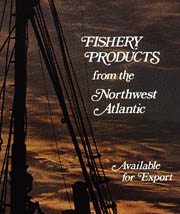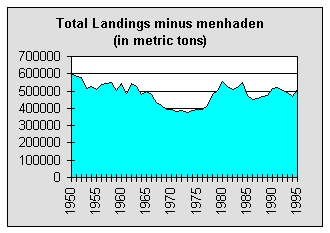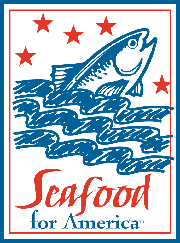

 |
 |
| NOTE: While the following addresses New Jersey in particular and the East coast of the United States in general, we expect that the situation relative to "misinterpretation" of existing data is limited to neither that state's nor that coast's fisheries. Anti-commercial fishing groups have assaulted commercial fisheries in many areas, their tactics are more or less identical. So are the liberties they take with the available data. |
We’re going to devote this and the next FishNet to a discussion of where the commercial fishing industry seems to be headed. However, we thought it might be helpful to first talk about where the industry has been and where, in our opinion, it is today. In this way we hope we can provide readers interested in fisheries issues a somewhat broader context than is usually presented to them.
“Commercial” fishing has been around for quite a few years. Fish and shellfish have been an important part of humankind’s diet since our first ancestors stumbled onto a beach. The earliest fishermen and women used simple gear - hands first, then spears, then hooks - to harvest water dwelling creatures one-by-one. Considering the obvious limitations of such techniques, fishing could not have become an efficient means of feeding larger numbers of people until the development of nets, either fixed in place and set in wait for the fish, or movable and used to pursue them through the water. In either case, the nets served simply to strain the fish out of the water column. As far as the basics of catching fish are concerned, not much has changed since then.
As we’ve written in earlier FishNets, fishing
on what is sometimes referred to as a truly commercial scale has been practiced
for well over a century. For most of this period it was more or less smooth
sailing for the commercial fishing industry. Barring the occasional attempts
by groups of sportsfishermen to grab entire species (successfully with
striped bass in New Jersey) or areas, and several World Wars, commercial
fishermen went quietly about the business of providing the non-fishing
public with their share of what was a bounteous public resource without
interruption. But in the Sixties our waters were invaded - legally, of
course - by huge fleets of foreign factory ships and the catcher vessels
that supported them. This invasion, and the resulting public outcry, was
the impetus for the drafting of the Magnuson Act in 1976. This legislation
eventually resulted in virtually halting foreign fishing in our Exclusive
Economic Zone. It also established the Regional Council centered fisheries
management system that is still in place today.
 |
From the brochure Fishery Products from the Northwest Atlantic Available for Export published by the Fisheries Development Division of the National Marine Fisheries Service in 1979 “Since the enactment of the Fisheries Management and Conservation Act in 1977 it has become obvious that many opportunities exist for exporting U.S. fisheries products abroad....The species identified (including dogfish, silver hake, scup, Atlantic mackerel, American eels, herring and monkfish) are by no means the only products available for export. They do represent those for which expanding harvesting potential exists.” |
Less than two decades ago commercial fishing was considered a growth industry, one deserving of the serious attentions of governmental agencies and private investors. In stark contrast, in recent years few other industries have come under the level of public scrutiny, and fewer still have generated the focused antagonism, that commercial fishing has. Media assaults on various aspects of commercial fishing have become commonplace, and severely restricting seafood harvesting - and, of course, restricting the consumption of domestic seafood - has spawned its very own group of dedicated “conservation” organizations.
 Various
technological innovations - progressing from sail to steam to diesel power,
from beam to otter trawls, from cotton nets to synthetics, from dead reckoning
to radio direction finders to loran to GPS, and from sounding leads to
precision sonar units - have supposedly all conspired to make today’s commercial
fishermen too efficient for their own or anybody else’s good. In spite
of this supposedly out-of-control fishing efficiency, as the box below
and the chart to the left show (and assuming Mr. Cunningham’s research
was at least as accurate as NMFS’s), the annual harvest from New Jersey’s
and the entire East coast’s waters has remained remarkably stable for the
better part of a century While it’s beyond our abilities to prove it, it’s
hard to imagine that the slight overall decline is a reflection of anything
other than significant and continuing habitat loss and water quality degradation.
[The data used in the chart were retrieved
from the NMFS Commercial Fishing web page
Various
technological innovations - progressing from sail to steam to diesel power,
from beam to otter trawls, from cotton nets to synthetics, from dead reckoning
to radio direction finders to loran to GPS, and from sounding leads to
precision sonar units - have supposedly all conspired to make today’s commercial
fishermen too efficient for their own or anybody else’s good. In spite
of this supposedly out-of-control fishing efficiency, as the box below
and the chart to the left show (and assuming Mr. Cunningham’s research
was at least as accurate as NMFS’s), the annual harvest from New Jersey’s
and the entire East coast’s waters has remained remarkably stable for the
better part of a century While it’s beyond our abilities to prove it, it’s
hard to imagine that the slight overall decline is a reflection of anything
other than significant and continuing habitat loss and water quality degradation.
[The data used in the chart were retrieved
from the NMFS Commercial Fishing web page ![]() ]
]
The increase in fishing effort that is generally
assumed, at least by everyone with what increasingly appears to be an anti-commercial
fishing rather than a save-the-fish bias, to be dooming our fisheries isn’t
reflected in the commercial landings. Not in New Jersey’s total commercial
landings going back a century or the East coast’s for fifty years. Granted
there have been significant technological advances that allow today’s commercial
fishermen to fish much more efficiently than they did fifty or a hundred
years ago (an interesting exercise that we’ll be getting to in an upcoming
FishNet will be a comparison of technological innovations in recreational
and commercial fishing). But the landings seem to demonstrate that this
efficiency isn’t really affecting the overall fisheries. While today’s
commercial fishermen are surely capable of catching more fish than they
were at any time in the past, there is a compelling amount of evidence
indicating that they aren’t.
| John T. Cunningham wrote in The New Jersey Shore (Rutgers University Press) in 1958 “...New Jersey fishermen still bring in some 30,000,000 to 40,000,000 pounds of edible fish each year - about the same as 50 years ago....” According to the National Marine Fisheries Service, in 1950 commercial landings of edible fish in New Jersey were 28,589,000 pounds (total reported landings minus menhaden, crustaceans, mollusks and freshwater species), a figure very close to Mr. Cunningham’s target. In 1996, again according to NMFS’s data, they totalled 43,800,000 pounds, indicating a significant increase. However, Atlantic mackerel accounted for 18 million ponds of the total in 1996 and less than 2 million in 1950. “Correcting” for mackerel - a fishery made up of newer, larger vessels that takes place beyond the New Jersey commercial fleet’s traditional grounds - the total was 25,800,000 pounds in 1996 and 26,900,000 pounds in 1950. |
If, once we allow for the impacts of habitat destruction and pollution, the overall level of commercial landings has remained more or less constant for several generations, what has changed?
The fishing industry’s ability to adapt to varying conditions has been destroyed. Before modern fisheries management, fishermen could switch from species to species when conditions in the fishery - evidenced by declining catche rates - warranted it. The species-by-species management in force today precludes this. Fishermen and fish are paying the price.
Public perceptions about commercial fishing have been severely distorted. This is in spite of easily accessible information showing that the domestic fishing industry on the East coast hasn’t been rapaciously expanding it’s harvest from year to year. It’s also in spite of the fact that participants in today’s so-called “overfished” fisheries are there at the invitation and with the support of the same management establishment that is now, with the enthusiastic backing of a vocal anti-commercial fishing movement, blaming them for there not being enough of particular species of fish.
Our estuarine, coastal and ocean ecosystems have
changed, or been changed, in ways that without question are significantly
affecting the fish and shellfish species that depend on them. In the last
century we’ve lost over half of our wetlands to development [![]() to a page on wetlands]. We’ve turned the remaining estuaries into the recreational
boating equivalents of the Garden State Parkway [
to a page on wetlands]. We’ve turned the remaining estuaries into the recreational
boating equivalents of the Garden State Parkway [![]() to
an article addressing boating impacts]. We’ve added untold tons of noxious
chemicals to our coastal waters and bottom sediments. And our weather patterns
have changed dramatically - as have the oceanographic processes that are
determined by them.
to
an article addressing boating impacts]. We’ve added untold tons of noxious
chemicals to our coastal waters and bottom sediments. And our weather patterns
have changed dramatically - as have the oceanographic processes that are
determined by them.
All of this has had a major impact on the fishing industry. Unfortunately the commercial fisherman has become a scapegoat for inadequate, underfunded science and politically distorted public policies. We’ll discuss what changes could remedy this and the consequences of those changes in the next FishNet.
